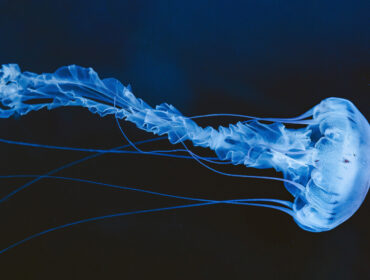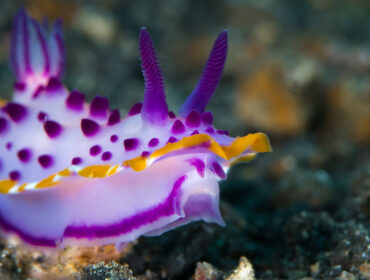Belonging to the order of cephalopods, which also includes nautilus, squid, and octopus, the cuttlefish is not actually a fish at all, but a mollusk. Although other tentacled members of this group of mollusks do not have an external shell, the cuttlefish is more closely connected to the nautilus, with one main difference being that the shell of the cuttlefish is internal, creating a structural frame for the mollusk’s body. This “shell,” called the cuttlebone, is made from porous aragonite, a carbonite mineral that comprises the structural foundation for many shelled animals, formed by biological and physical processes. It is the most identifiable feature of the cuttlefish, as it is the only mollusk to possess a cuttlebone, making it easy to differentiate it from its squid cousins. Cuttlebones are often used as a source of dietary calcium for captive birds.
As with most cephalopods, the cuttlefish is highly intelligent and self-aware, possessing the ability to change its markings and coloration at will to camouflage itself in nearly any marine environment. These changes are not only to hide from predator and prey, but are used as a form of communication between cuttlefish themselves. Their eyes are among the most developed in the animal kingdom, with scientific studies showing that the cuttlefish begins to observe its surroundings before its even born, due to fully developed vision while still in the egg. The optic nerve of the cuttlefish eye is located at the back of the retina, meaning that cuttlefish vision suffers from absolutely no blind spots. Two concentrated sensor cells on each retina allow the cuttlefish to look both backward and forward at the same time, enhancing the hunting capabilities of this cunning animal.
Although now replaced by synthetic materials, cuttlefish ink was at one time the main source of sepia dye. They remain a popular gastronomic delight in European areas such as Spain, Portugal, and Italy, where they are served in stews, pasta, and rice dishes, as well as dried and shredded for a light, salty snack. Despite being generally non-toxic, cuttlefish do have bacteria-produced neurotoxins in their saliva, so care should be taken when handling this species for consumption.




